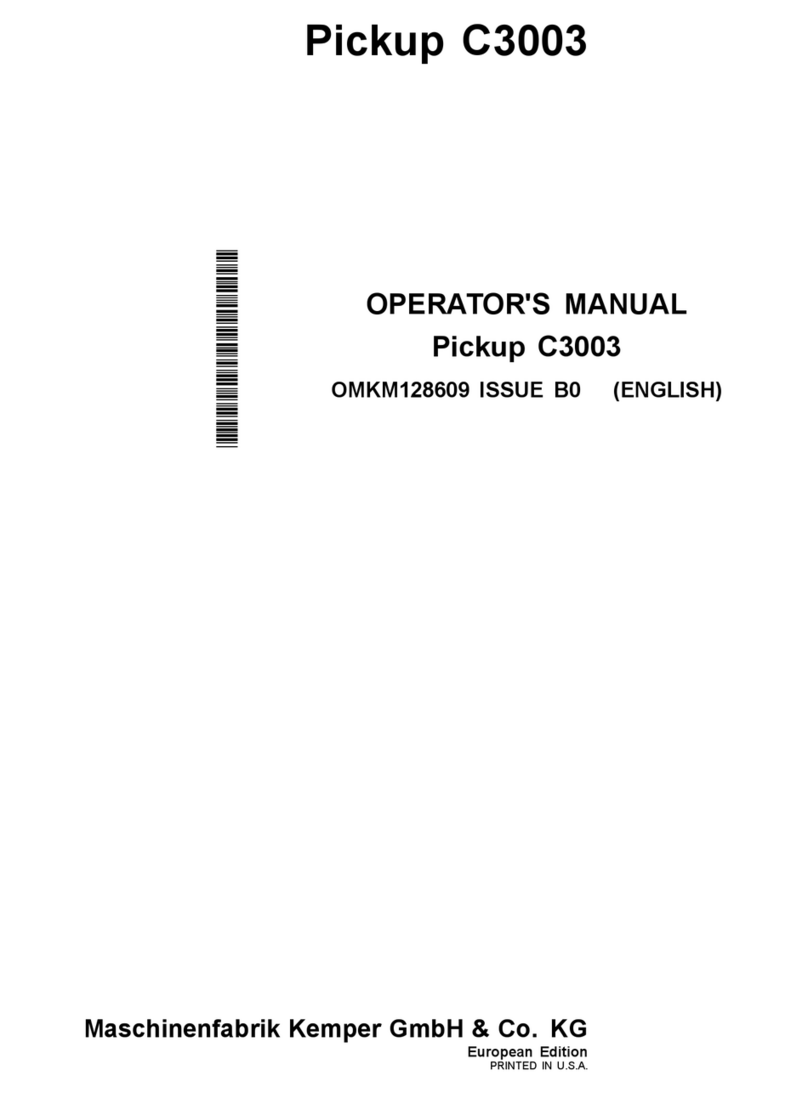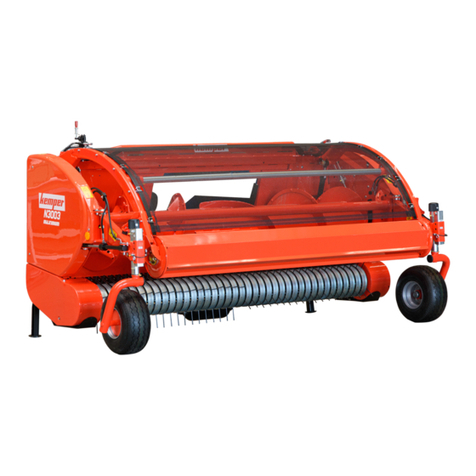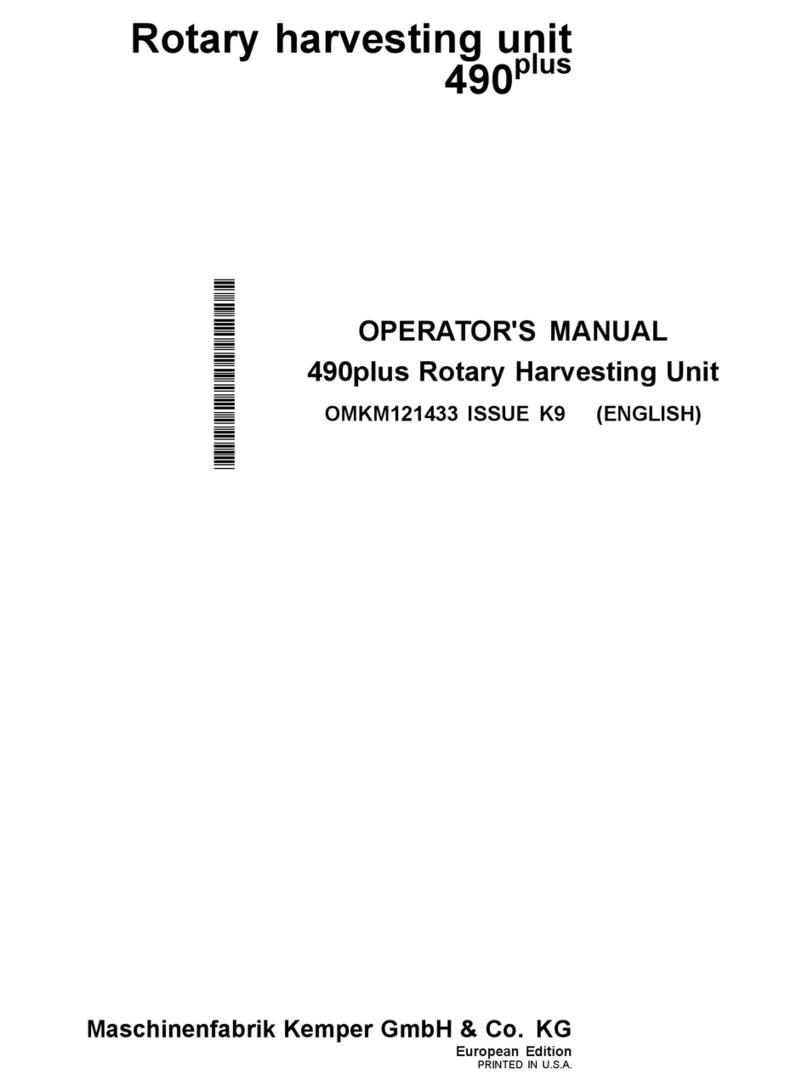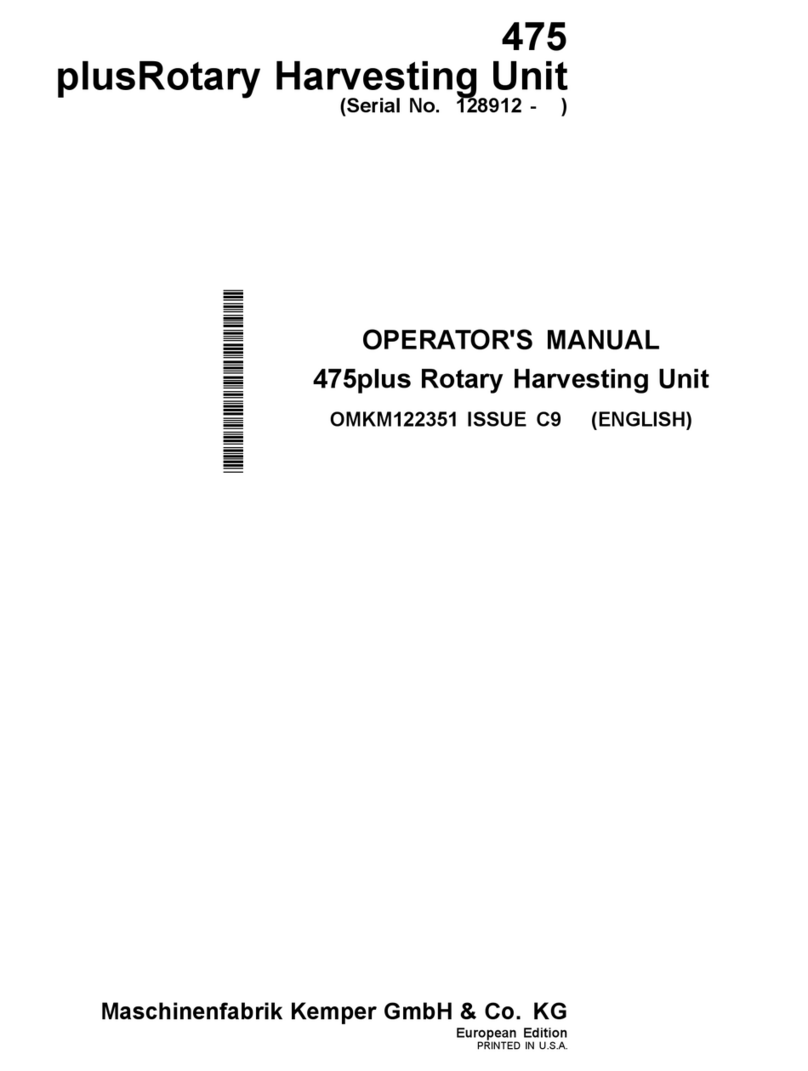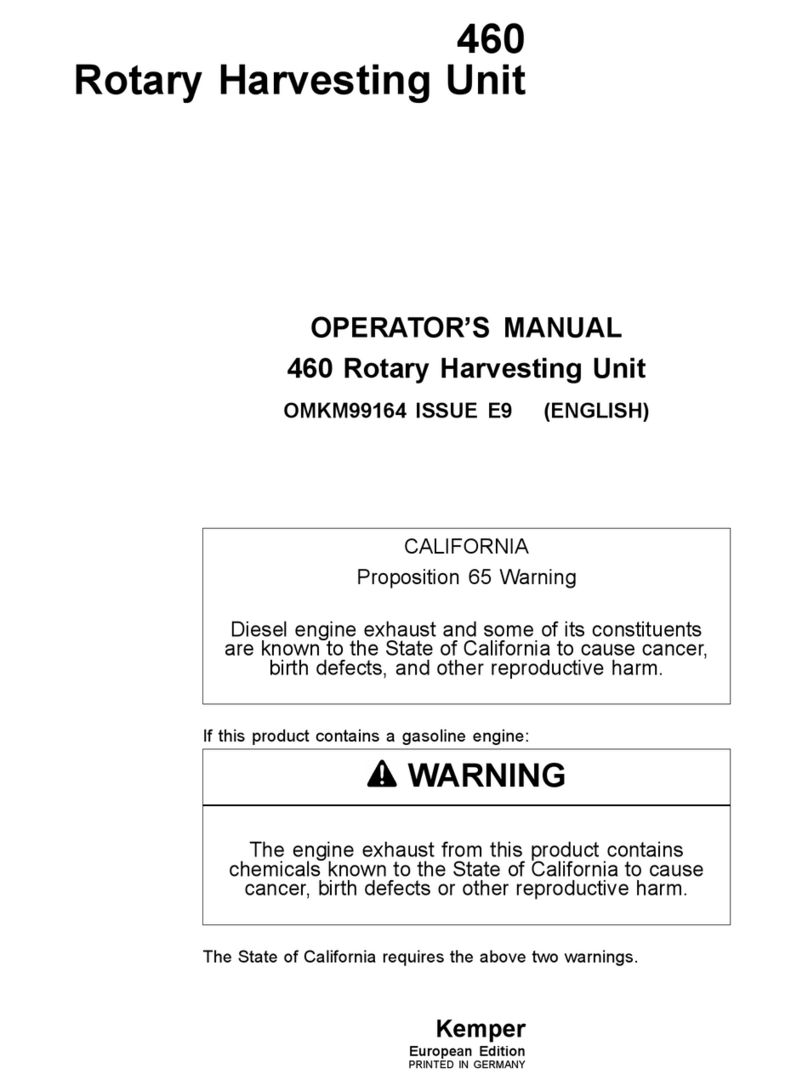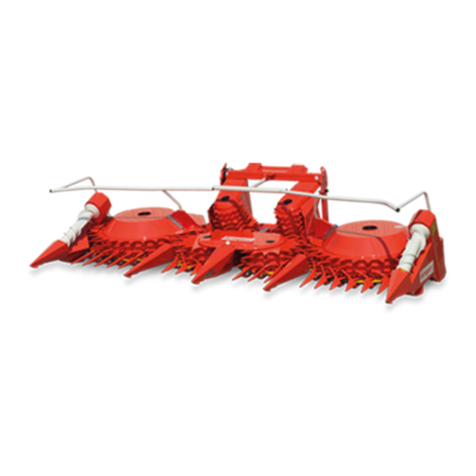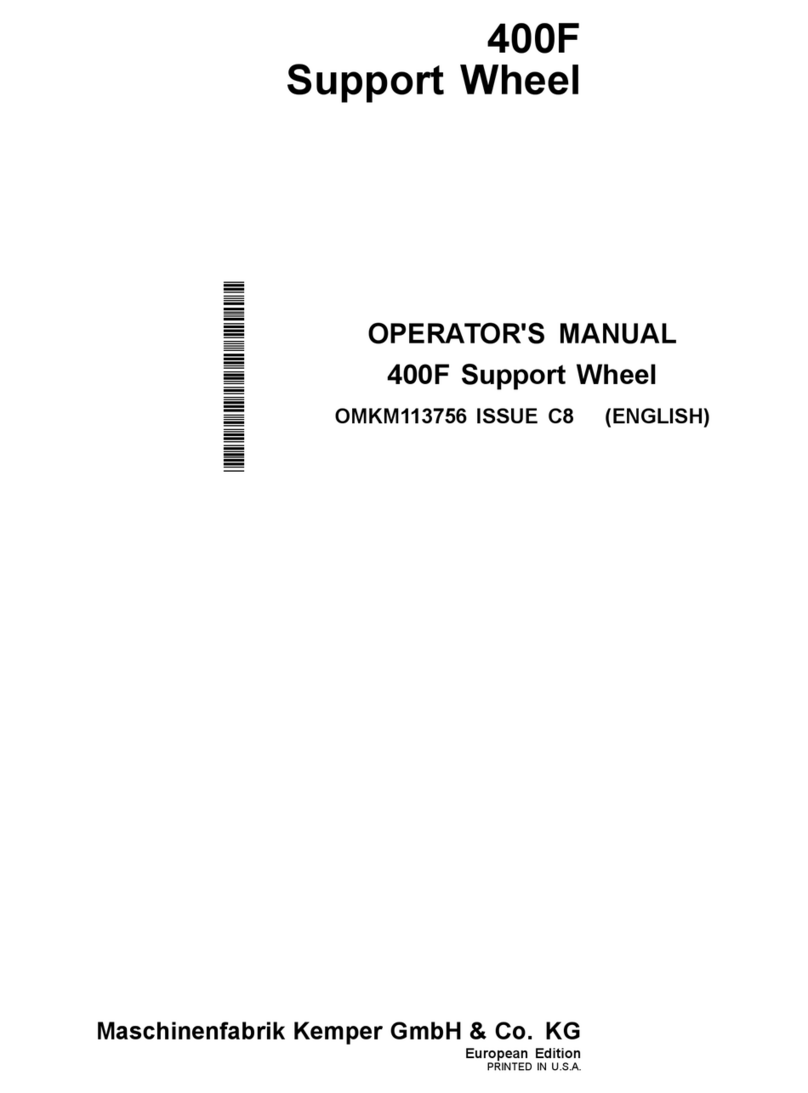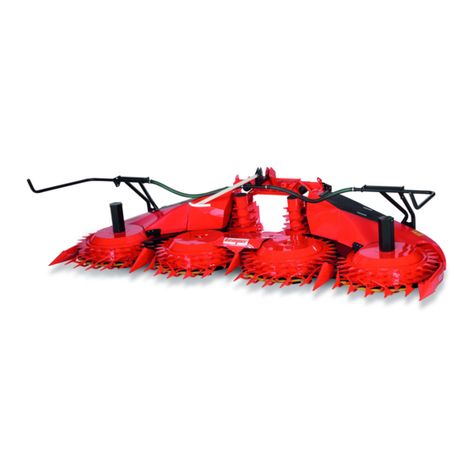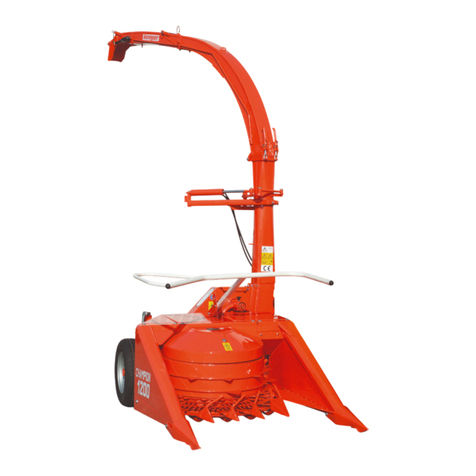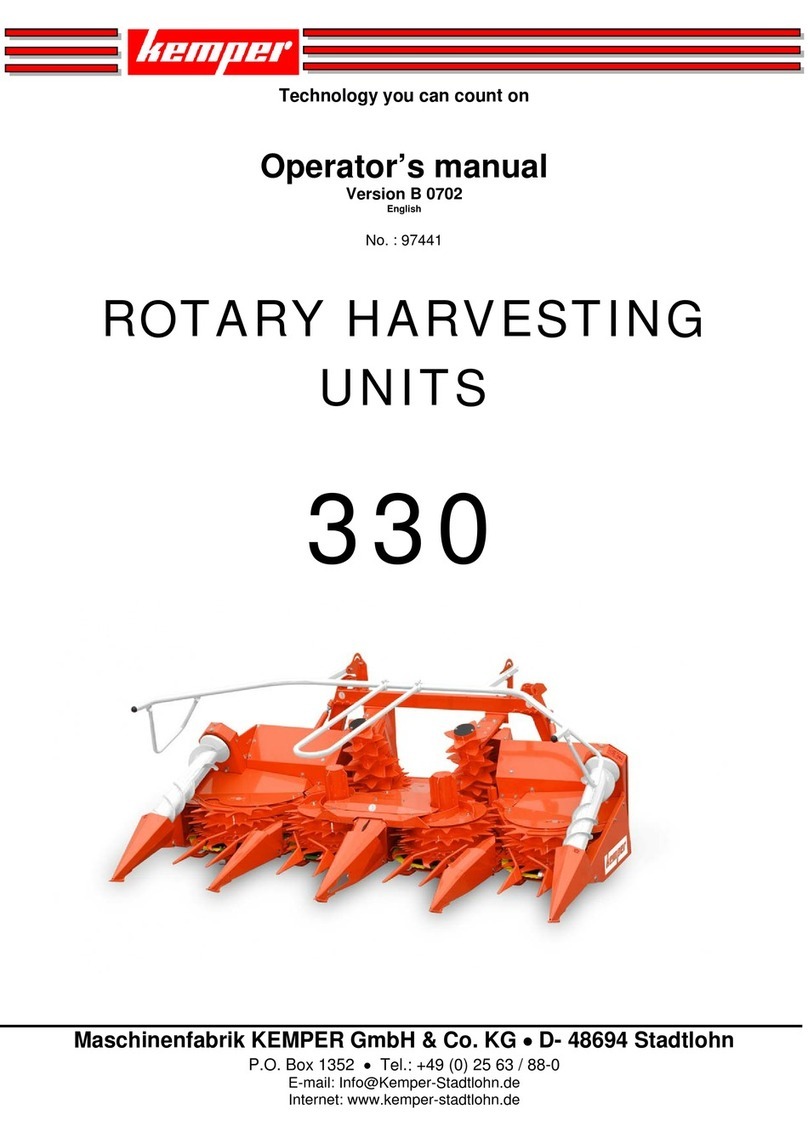
Contents
Page
Harvesting Unit Method of
Operation—Higher Yields Through
Narrow Corn Row Spacing.............................302
Operating the Harvesting
Unit—General Use .........................................302
Corn Harvesting Normal Harvesting
Conditions ......................................................302
Corn Harvesting Down Crop ............................303
Harvesting ShortStemmed Corn .......................304
Whole Crop Silage..............................................304
Technical Retrofitting to WholeCrop
Silage (WCS) Harvest ....................................306
Harvesting Crop with Very Close or
Wide Row Spacing (345, 360 and 375) ....... 3011
LengthofCut Adjustment with CLAAS
Forage Harvester .........................................3012
Length of Cut and Drum Speeds with
CLAAS Forage Harvester 860880
(Type 491) ....................................................3012
Length of Cut and Drum Speeds with
CLAAS Forage Harvester 830900
(Type 492) ....................................................3013
Length of Cut and Drum Speeds with
CLAAS Forage Harvester 830900
(Type 493) ....................................................3014
Length of Cut and Drum Speeds with
CLAAS Forage Harvester 930980
(Type 494) ....................................................3020
LengthofCut Adjustment with NEW
HOLLAND and CASE Forage Harvester .....3022
Length of Cut and Drum Speeds with
NEW HOLLAND and CASE Forage
Harvester......................................................3024
Length of Cut and Drum Speeds with
KRONE Forage Harvester ...........................3025
Adjusting Harvesting Unit Lateral Float
(Optional on 345 and 360, Standard
on 375) .........................................................3025
Adjusting the Feed Bars (330, 345 and 360)....3026
Adjusting the Feed Bars (375 up to
Construction Year 2009)...............................3027
Adjusting the Feed Bars (375 from
Construction Year 2010)...............................3028
Adjusting the Large Dividers.............................3029
Steering Assistance (Option)............................3030
Accessories
Special Kit for Row Guidance (Steering
Assistance).....................................................351
Automatic Height Control Kit ..............................351
Special Kit for WholeCrop Silage ......................351
Special Kit for Crops with Very Close
or Wide Row Spacing (345, 360 and 375) .....351
Special Kit for Quality of Cut...............................351
Troubleshooting
Correction of Defects on the Rotary
Harvesting Unit...............................................401
Page
Lubrication and Maintenance
Service Intervals.................................................451
Transmission Oil.................................................451
General View of Drives and Oil Levels
in the Rotary Harvesting Unit (Part 1) ............452
General View of Drives and Oil Levels
in the Rotary Harvesting Unit (Part 2) ............453
Overview of Oil Levels in Input Transmission.....454
Checking Oil Level and Changing Oil.................455
Lubricants...........................................................455
Coolant for Main Drive Friction Clutch................455
Alternative and Synthetic Lubricants ..................456
Mixing Lubricants................................................456
Lubricant Storage ...............................................456
Every 10 Hours U.J. Shaft................................456
Every 10 Hours Rotating Crop Divider .............457
Every 10 Hours Lower Rolls of Tilt
Frame (If Equipped, Standard on
Model 375) .....................................................457
Every 50 Hours Lower Axle Pin of
Hydraulic Cylinder and Frame Hinge Clutch ..457
Every 50 Hours Hinges of Outer Sections........458
Once Every Year RadialPin Clutch of
Gathering Drum..............................................458
Once Every Year Upper Rolls of Tilt
Frame (If Equipped, Standard on
Model 375) .....................................................458
Every 3 Years Change Coolant
of Main Drive Friction Clutch (If
Equipped, Standard on Model 375) ...............459
Before Start of Season .......................................459
Daily Maintenance (Or More Often if
Necessary) .....................................................459
Weekly Service.................................................4510
End of Season Maintenance ............................4510
Service
Metric Bolt and Screw Torque Values.................501
Main Drive Slip Clutches
WaterCooled (Optional on 345 and
360, Standard on 375) ...................................502
Removal of Slip Clutch .......................................503
Disassemble Slip Clutch.....................................505
Main Drive Friction Clutches (330, 345
and 360) .........................................................506
Gathering, Cross Feed and Feed Drum
RadialPin Clutches........................................507
Feeding and Cutting Area...................................508
Crop Feed Area................................................ 5011
Drive for DownCrop Auger ..............................5012
Storage
Storage at End of Harvesting Season ................551
Removing Harvesting Unit from Storage ............551
Specifications
330 Rotary Harvesting Unit ................................601
Continued on next page
ii 040810
PN=2
